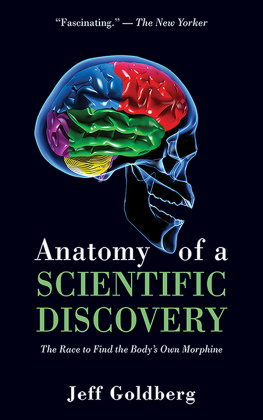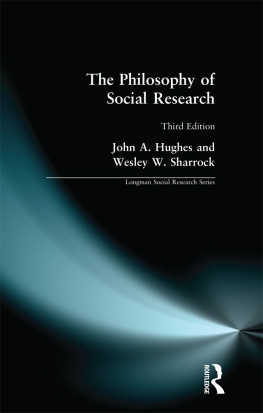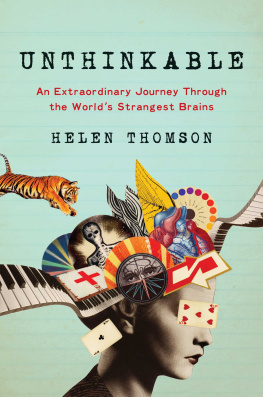
Copyright 1988, 2013 by Jeff Goldberg
All Rights Reserved. No part of this book may be reproduced in any manner without the express written consent of the publisher, except in the case of brief excerpts in critical reviews or articles. All inquiries should be addressed to Skyhorse Publishing, 307 West 36th Street, 11th Floor, New York, NY 10018.
Skyhorse Publishing books may be purchased in bulk at special discounts for sales promotion, corporate gifts, fund-raising, or educational purposes. Special editions can also be created to specifications. For details, contact the Special Sales Department, Skyhorse Publishing, 307 West 36th Street, 11th Floor, New York, NY 10018 or .
Skyhorse and Skyhorse Publishing are registered trademarks of Skyhorse Publishing, Inc., a Delaware corporation.
www.skyhorsepublishing.com
10 9 8 7 6 5 4 3 2 1
LIBRARY OF CONGRESS CATALOGING-IN-PUBLICATION DATA IS AVAILABLE ON FILE.
ISBN: 978-1-62636-193-5
Printed in the United States of America
T ABLE OF C ONTENTS
I NTRODUCTION TO THE T WENTY -F IFTH A NNIVERSARY E DITION
In the mid-1970s, the discovery of a family of molecules in the body called endorphins, which behaved exactly like narcotic drugs, captivated the popular as well as the scientific imaginations. Yet, it wasnt just what was discovered that made it remarkable; it was how the discovery was made. The work by Hans Kosterlitz and John Hughes, in a small, dusty laboratory in Aberdeen, Scotland, was great science but hardly big science. It evolved not from massive funding or modern laboratories filled with high-tech equipment but from single-minded dedication, keen intelligence, and the ability to make the most of limited tools. Their discovery epitomized the same kind of low-budget, garage-style innovation that would lead to the computer revolution a decade later.
Twenty-five years have passed since this book was published, and so have some of the central figures. Hans Kosterlitz, chief of the Aberdeen lab, died in 1996 at age ninety-three. He was already seventy-three when his assay, using a tiny bit of twitching nerve tissue from the lower intestine of guinea pigs, demonstrated that there was opiate activity in a chemical fragment distilled from pig brains by his colleague John Hughes. And Avram Goldstein, the discoverer of dynorphin, the most powerful endorphin, died in 2012. He was ninety-two. But, the younger generation of endorphin investigators are all still at work. Solomon Snyder was only thirty-six when he and his twenty-nine-year-old postdoc Candace Pert discovered molecular receptors in the brain that fit opiates exactly like a lock fits a key. Today, at seventy-one, Snyder continues his research juggernaut at Johns Hopkins, where, with more than a thousand publications to his credit, hes investigating the effects on memory of a brain-produced gas called nitric oxide. Always unconventional, Candace Pert, meanwhile, is the only one of the original endorphin researchers with a Facebook page and a blog devoted to a new age theme of Healing the Hurting, Shining the Light. Shes also working in private industry on an AIDS vaccine. John Hughes was thirty-five when he identified the formula for Met-enkephalin, the first of the endorphins. Now seventy-one, after retiring as director of the Parke-Davis Neuroscience Research Centre, he continues his scientific work at Wolfson College, Cambridge, when hes not in his garden or on the golf course.
The word endorphins has entered the common vernacular, meaning any one of a number of mood-related chemicals that have been found in the body. But the style of science that brought this deeply hidden secret of human nature into the light may indeed be a thing of the past.
Today, big science is the standard: big budgets, big staffs, big equipment. With the ability to exchange data instantly over the Internet, collaborations between dozens of scientists in multiple research centers (often scattered over the globe) are the norm and are considered necessary to gain ever-tightening research funding. It would be almost impossible for the small, slow, and steady to win any scientific race in 2013.
A case in point is the discovery of a sodium ion channel in nerve cells called NaV1.7 in the mid-1990s by a small group of researchers at Stony Brook University. NaV1.7 appeared to be a crucial gateway for pain signals. It was an intriguing finding, but it took a massive collaboration between nineteen scientists in five countries, funded by the drug giant Pfizer Pharmaceuticals, to reveal the molecular gates true potential. The multinational research team analyzed the DNA of children born with a congenital insensitivity to pain. These children, who typically suffer severe burns and other grave injuries without knowing it, had once been thought to have a defect in their endorphin pathways. Instead, they were discovered to have nonfunctioning NaV1.7 channels. As a result, pain messages were completely shut down; the children were in a permanent state of local anesthesia.
Imagine if pain could be blocked as effectively in people suffering from disease or injury. Pfizer and Icagen, a rival pharmaceutical company, are hard at work developing drugs based on this discovery, in hopes of finding a non-addictive painkillerthe holy grain of a stingless bee that was also one of the underlying motivations of endorphin researchers. That is, until hopes for an endorphin pill evaporated within a few years of the initial discovery.
While Pfizer and Icagen battle it out for the next blockbuster analgesic, other drug companies are instead spending millions of dollars frantically looking for ways to make conventional narcotics uncrushable, unsnortable, uninjectable, and generally unlikeable when tested on drug addicts. Clearly, big science doesnt always yield big results, especially in drug research. And when big science comes up short, who knows? Maybe thats when the next John Hughes will again peddle his push-crate bicycle through the predawn streets in quest of fresh pig brains.
S LAUGHTERHOUSE D AYS
In Aberdeen, on the northeast coast of Scotland, winter begins in early October and does not let up until May, or so it seems. On most days it rains.
In the fall of 1973 the old fishing and textile manufacturing city was being transformed into a kind of American frontier town by the discovery of offshore oil. Texas oilmen roamed the streets in ten-gallon hats and cowboy boots, and the young men who worked the rigs came into town on the weekends like western movie extras, their pockets stuffed with cash, to drink and brawl themselves into oblivion. Oil was bringing prosperity and development to Aberdeen; new office buildings and shops were springing up among the grim granite edifices.
All the buildings in and around Aberdeen were made of granite mined from a nearby quarrythe building code of the granite city is still very strict in this regard. The stone sparkled with silica when the sun was shining, but on Union Street, Aberdeens historic main street, it was dull, dark, and gray at four oclock in the morning.
The sidewalks were wet and empty, the store windows unlit and gated, as John Hughes rolled through the predawn blackness, pedaling a push-crate bicycle that resembled an ice cream vendors.
Hughes was thirty years old, a short, slight, bespectacled man, who was booking-looking except for his swollen hands, which looked like the hands of a boxer or a murdererflecks of blood had crusted under the cuticles and faintly stained his knuckles and fingertips. Most of his head was obscured by an orange woolen balaclava helmet that his wife, Mandy, had given him on the Christmas past.
Next page










